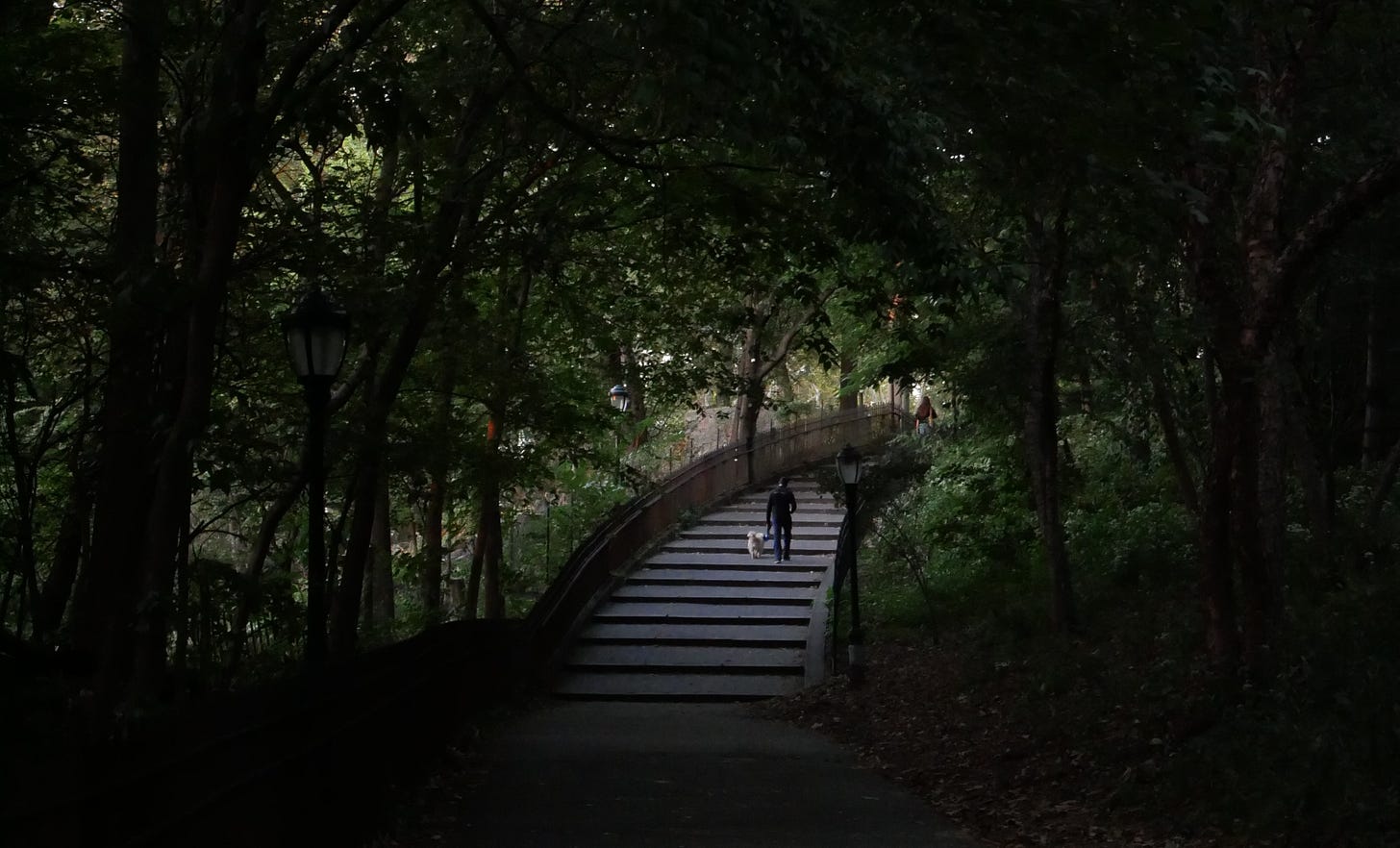Secrets of Riverside Park
Transforming a “wasteland” into today’s Riverside Park cost the city hundreds of millions of dollars, more than fifty years, and no shortage of scandals
“Isn’t this a temptation to you? Couldn’t this waterfront be the most beautiful thing in the world?” Those were the words of Robert Moses, newly appointed New York City Park Commissioner, as he surveyed the Hudson River waterfront in 1934.
Today, we know the area west of Riverside Drive as a lush landscape, but back then, it hardly even resembled a park. Moses’ biographer Robert Caro better described it as a “wasteland,” in which “the ‘park’ was nothing but a vast low-lying mass of dirt and mud.” To make matters worse, tracks for the New York Central Railroad split the entire park in half, blocking access to the water, and carrying black smog and a burnt stench to the luxury apartments on Riverside Drive.
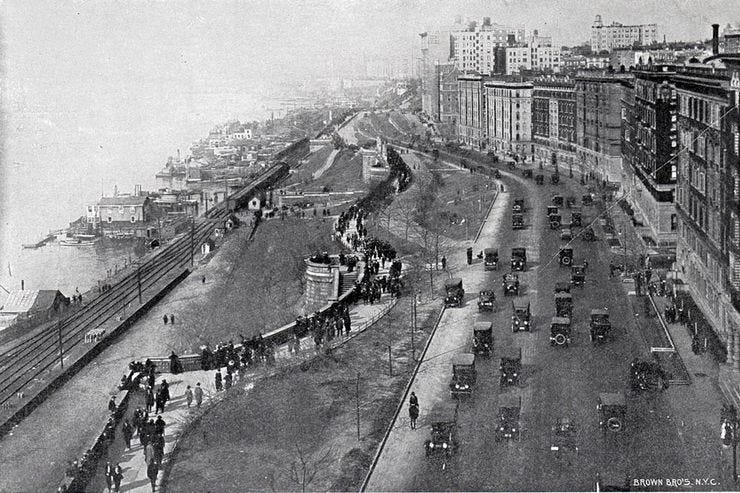
A broken clock is right twice a day, and Robert Moses, for all his mistakes and controversies, may have built the most beautiful thing in the world: Riverside Park. All it took was a project that cost twice as much as the Hoover Dam, plus a lot of notable figures, weird ideas, and age-old controversies.
Construction started in 1873, at a time when developers envisioned Riverside Drive as a rival to Fifth Avenue and its old money residences. The developers brought in Frederick Law Olmsted, the architect behind Central Park, to map Riverside Drive from 72nd St to 123rd St, lay out thin “carriage roads” diverging from the Drive to serve residences, and design Morningside Park while he was at it.
This was the last time a single figure oversaw Riverside Park until Robert Moses decades later. City politics forced Olmsted out in 1877, leaving the park divided among several architects with conflicting designs. In 1886, Olmsted lamented this development, describing how “in many important particulars the design has been mangled.”
For nearly the next half-century, the land remained relatively undeveloped. An 1893 New York Times article complained that “but a small portion of the land thus acquired has been improved so as to be capable of public use.” A major reason was that Riverside Drive and the Upper West Side failed to compete with the allure of Fifth Avenue and the Upper East Side. It was not until the 1910s and 20s that upscale homes were built on Riverside Drive.
In the meantime, Riverside Park became home to several garbage dumps, lots of squatters, and of course, the New York Central Railroad. Some monuments were built at this time, such as the Soldiers’ and Sailors’ Monument on 89th St in 1902 and Grant’s Tomb on 120th St in 1897 (which, in its early years, received more visitors than the Statue of Liberty).
In response, Columbia University tried to take matters into its own hands. In 1896, it inherited from philanthropist Edwin Gould a boathouse on 115th St and used it for nearly three decades as the training ground for the crew team. Much closer than the team’s current boathouse in Inwood, it unfortunately burned down in 1927.
If a boathouse right by campus doesn’t sound cool, the University also tried building a stadium and athletic complex that, with landfill, would extend onto the Hudson River at 116th St. University President Nicholas Murray Butler even proposed an entrance on the water that distinguished visitors arriving by ship could use.
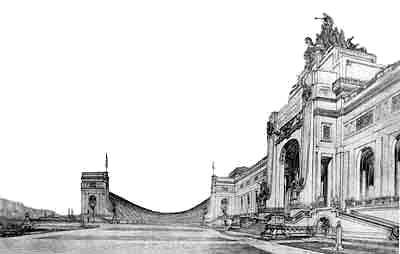
Butler’s rhetoric, however, was a little questionable. In 1920, as he tried to redirect public funding from monuments and towards the stadium, he asked, “Why should millions of dollars be spent on some memorial to the soldiers and sailors of the great war which would be merely one more addition to our unnecessary monuments?” Besides Butler’s contentious takes, the $2,000,000 price tag (a modern day $33.5 million) and the need for a bigger stadium pushed Columbia to build the Baker Athletics Complex in Inwood one year later.
So what did it take for Riverside Park to finally turn things around? A major catalyst was the traffic and mayhem just south of the park in an area known as “Death Avenue.” This ominous term referred to the intersection where Central Railroad freight trains crossed paths with vehicles and pedestrians on 10th and 11th Avenues. In 1910, it was estimated that the intersection was responsible for 548 deaths and over 1,500 injuries.
The situation got so bad that the railroad hired “West Side Cowboys” who rode horses and waved flags to guide oncoming trains.
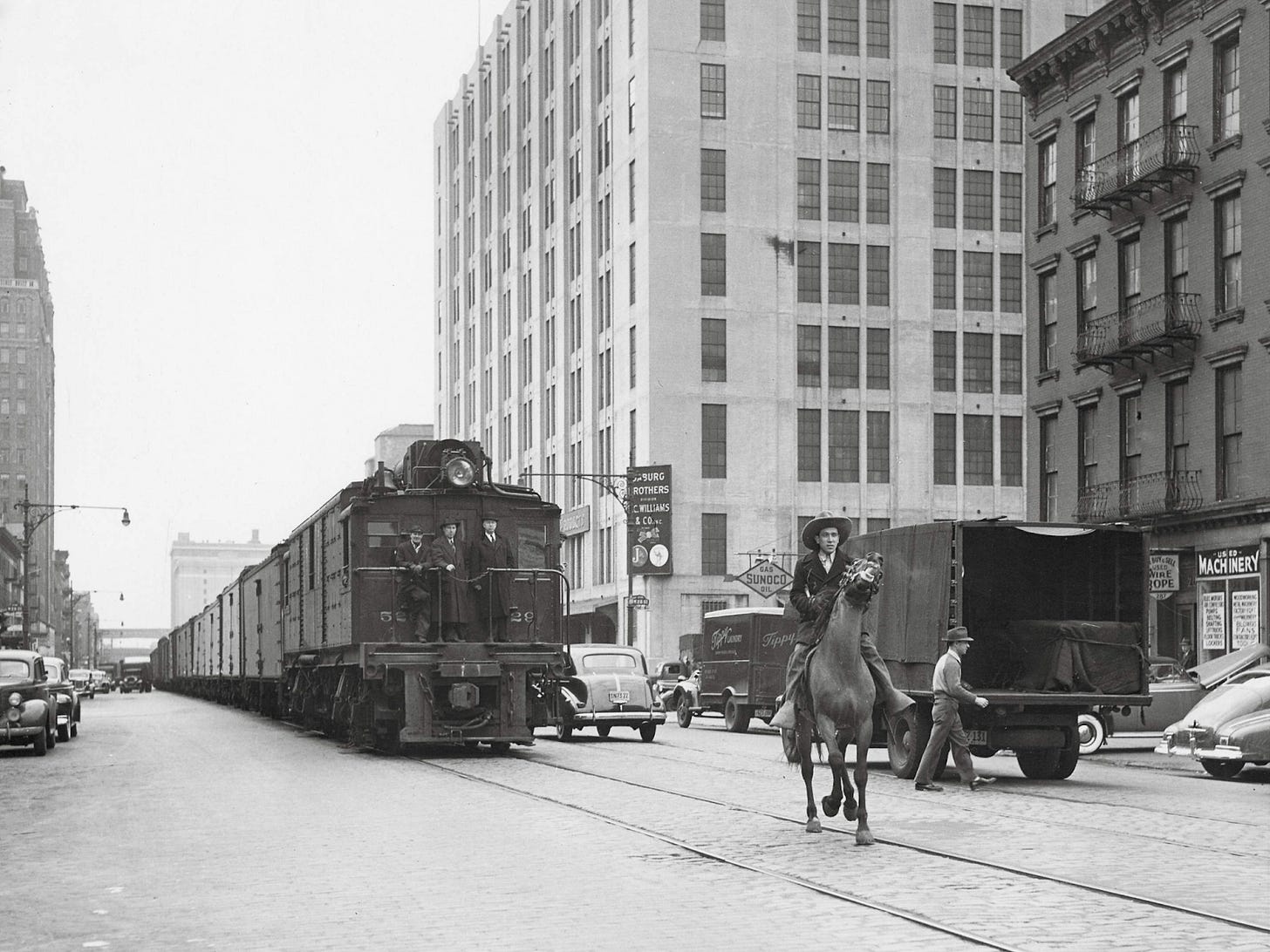
As clever as this solution was, a long-term fix was needed. In 1913, New York Central proposed building a tunnel through Riverside Park that would separate its trains from everyday traffic. Before it could be put into effect, in 1924, city comptroller Charles Craig put forth a plan for a parkway running up the waterfront.
By the time these plans were approved, Robert Moses had become Parks Commissioner in 1934. Originally, the firm McKim, Mead & White (designers of Columbia’s campus) was hired for the job, and proposed building an ornate, above-ground aqueduct for the parkway (similar to the viaduct by the Manhattanville campus).
Moses immediately halted this plan, calling it a “visionary scheme.” Instead, he ushered in the “West Side Improvement” plan. With the labor of the Works Progress Administration, the highway was shifted closer to the water, freeing space for pedestrians in the park. Where did the trains go? Because of the construction of an elevated esplanade over the train tracks, trains now ran beneath the pedestrians.
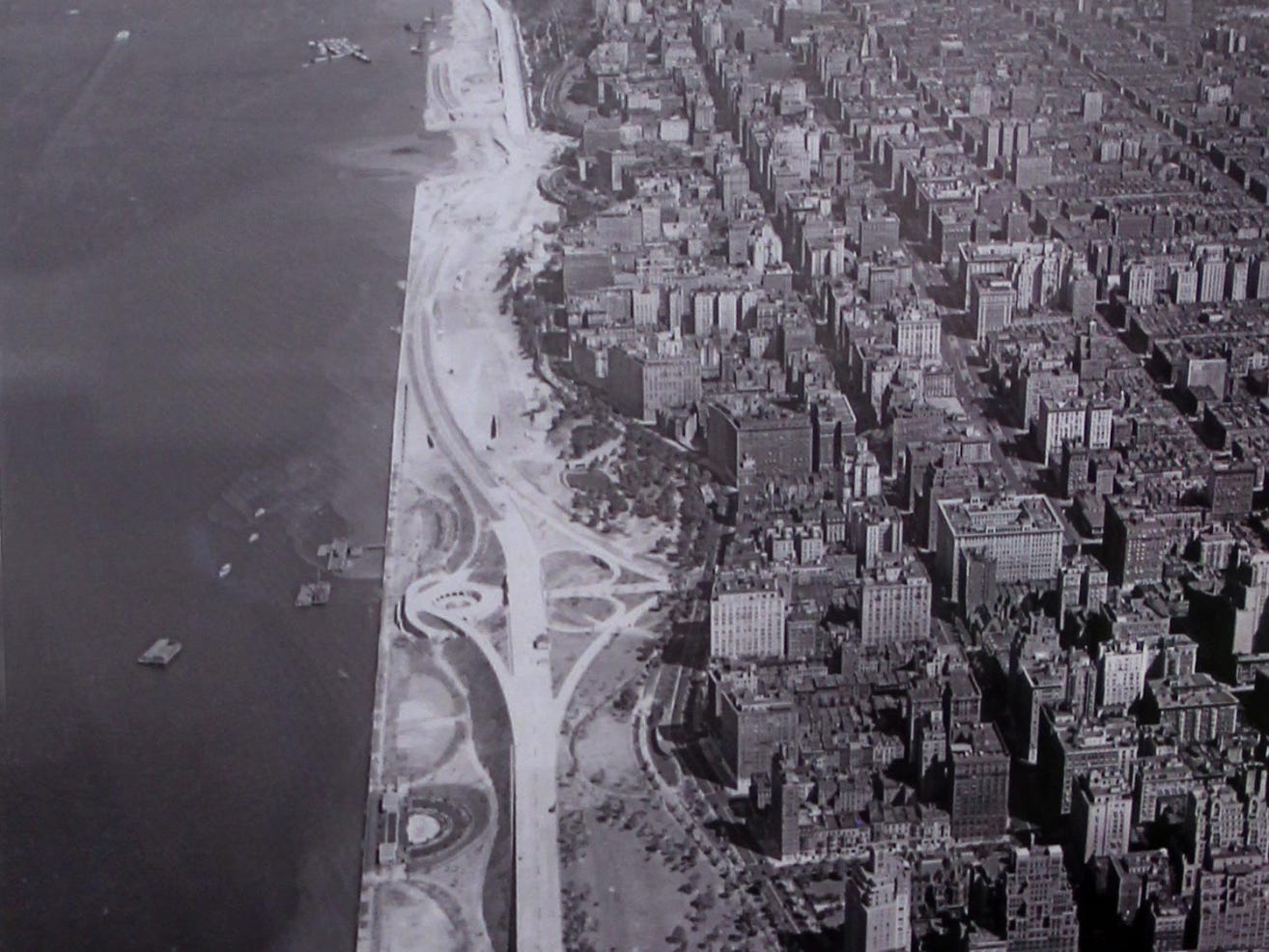
The New York Central is long gone, but next time you’re in Riverside Park, look down one of those metal grates and you’ll see the tracks that carry Amtrak riders to and from Penn Station. Completed in 1941, it was an unusually pedestrian-friendly plan for Moses, who previously proposed an elevated freeway that would go through the Empire State Building’s seventh floor.
Nonetheless, the West Side Improvement Project shaped Riverside Park into the scenic, walkable destination we know today. Pedestrians feel far removed from car and train traffic, and the elevated walkway over the tracks provides a great view of the Hudson River and, of course, my beloved home state of New Jersey. Yet behind the scenery lies a chaotic and entertaining history that should make us more appreciative of our local park.
Mr. Baum is a junior in the joint degree program between the Jewish Theological Seminary and the School of General Studies. He is a senior editor for Sundial.
The opinions expressed in this article are solely those of the author and do not necessarily reflect the views of the Sundial editorial board as a whole or any other members of the staff.



